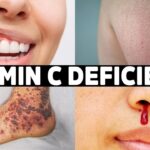Vitamin D is a fat-soluble vitamin crucial for maintaining calcium and phosphate balance, promoting bone mineralization, and supporting immune function. It plays a significant role in muscle health, mood regulation, and inflammation control. There are two primary forms: vitamin D2 (ergocalciferol) and vitamin D3 (cholecalciferol), with D3 being the more potent and biologically active form.

Causes of Vitamin D Deficiency
Insufficient Sun Exposure
Vitamin D synthesis occurs in the skin upon exposure to ultraviolet B (UVB) rays. Limited sunlight due to geographic location, indoor lifestyles, sunscreen overuse, or wearing full-body coverings can significantly reduce vitamin D production.
Poor Dietary Intake
Vitamin D is naturally present in very few foods. A diet lacking fortified foods or natural sources like fatty fish, liver, and egg yolks can result in deficiency.
Malabsorption Syndromes
Gastrointestinal conditions such as celiac disease, Crohn’s disease, and chronic pancreatitis impair the absorption of fat-soluble vitamins, including vitamin D.
Obesity
Vitamin D is sequestered in adipose tissue, reducing its bioavailability in the bloodstream. Individuals with obesity may have a higher requirement to maintain optimal levels.
Kidney and Liver Disorders
These organs are essential for converting vitamin D into its active form, calcitriol. Impairment in either organ can lead to functional deficiency.
Symptoms and Signs of Vitamin D Deficiency
Early and Subtle Manifestations
- Chronic fatigue
- Generalized muscle weakness
- Mood swings and irritability
- Bone pain and joint discomfort
- Difficulty concentrating
Advanced Deficiency Effects
- Frequent infections due to weakened immunity
- Osteomalacia in adults (soft bones)
- Rickets in children (bone deformities)
- Hair thinning or alopecia
- Increased risk of fractures and osteoporosis
Populations at Higher Risk
Infants and Breastfed Babies
Breast milk contains low levels of vitamin D, and without supplementation, exclusively breastfed infants are at risk, especially if they receive little sunlight.
Elderly Adults
Aging reduces the skin’s ability to synthesize vitamin D. Moreover, reduced outdoor activity and dietary limitations increase risk among older populations.
Dark-Skinned Individuals
Melanin reduces the skin’s capacity to produce vitamin D from sunlight, making individuals with darker skin more susceptible to deficiency.
People with Limited Mobility
Those who are homebound, institutionalized, or have disabilities limiting outdoor exposure are at heightened risk.
Diagnostic Criteria and Testing
Serum 25(OH)D Measurement
Vitamin D status is assessed by measuring serum 25-hydroxyvitamin D levels:
- Optimal: 30–50 ng/mL
- Insufficient: 20–29 ng/mL
- Deficient: <20 ng/mL
- Severely Deficient: <10 ng/mL
Routine testing is recommended for individuals exhibiting symptoms, or those belonging to high-risk groups.
Health Risks and Long-Term Impacts
Skeletal Disorders
Long-term deficiency contributes to reduced bone mineral density, increasing susceptibility to osteoporosis, osteopenia, and stress fractures.
Immune Dysregulation
Low vitamin D levels are linked to increased incidence of infections such as influenza and respiratory tract infections, and may also influence autoimmune conditions like multiple sclerosis and type 1 diabetes.
Cardiovascular Health
Emerging research suggests an association between vitamin D deficiency and hypertension, atherosclerosis, and increased cardiovascular mortality.
Mental Health Implications
Studies have found correlations between low vitamin D and depression, seasonal affective disorder, and cognitive decline in elderly individuals.
Treatment of Vitamin D Deficiency
Supplementation Strategies
- Mild Deficiency: 600–800 IU/day of vitamin D3
- Moderate to Severe Deficiency: 50,000 IU weekly for 6–8 weeks, followed by maintenance dosing
Oral vitamin D3 is preferred due to superior absorption and conversion rates compared to D2.
Dietary Adjustments
Vitamin D-Rich Foods Include:
- Salmon, mackerel, tuna
- Fortified milk, cereals, and orange juice
- Egg yolks
- Beef liver
- Cod liver oil
Safe Sunlight Exposure
Expose the face, arms, and legs to sunlight for 10–30 minutes several times per week without sunscreen, depending on skin type, geography, and season.
Prevention of Vitamin D Deficiency
Recommended Daily Allowance (RDA)
- Infants (0–12 months): 400 IU/day
- Children & Adults (1–70 years): 600 IU/day
- Seniors (>70 years): 800 IU/day
- Pregnant and Lactating Women: 600–800 IU/day
Monitoring and Long-Term Management
Individuals with a history of deficiency, chronic illness, or minimal sun exposure should undergo periodic serum 25(OH)D testing to maintain optimal levels.
Vitamin D deficiency remains a global health concern with wide-ranging consequences for bone health, immune function, and chronic disease susceptibility. Through a combination of responsible sun exposure, dietary vigilance, and, when necessary, targeted supplementation, this condition is entirely preventable and treatable. Awareness, early detection, and consistent management are essential in preserving long-term health and vitality.

